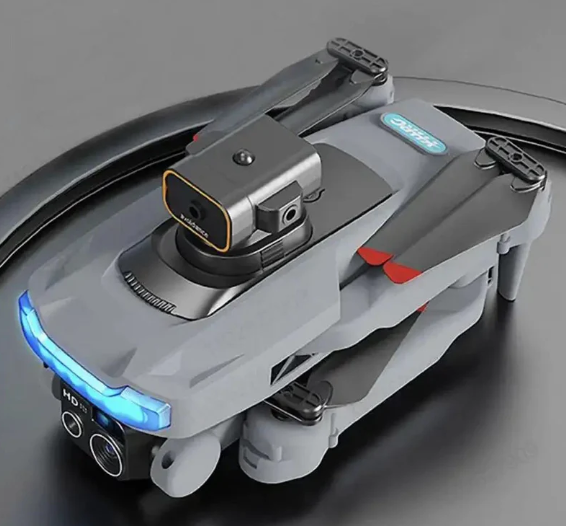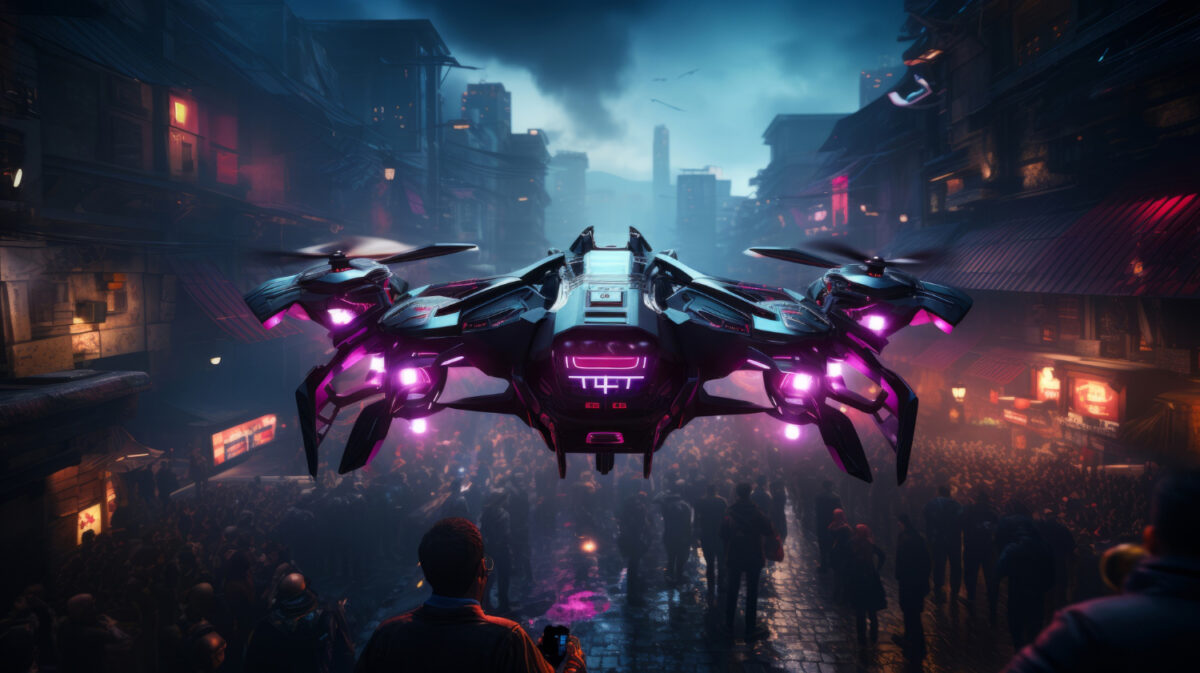Drones with cameras have taken the world by storm, revolutionizing the way we capture images and videos. Whether you’re a professional photographer, an avid traveler, or simply a hobbyist, a drone can elevate your perspective and transform your creative endeavors. In this guide, we’ll delve into the best brands, pricing, features, and tips for selecting the perfect drone with a camera, ensuring your purchase aligns with your needs and budget.
A. What is a Drone with a Camera?
A drone with a camera, or UAV (unmanned aerial vehicle), is an aircraft without a human pilot on board, equipped with a camera to capture photos and videos from the sky. These drones vary in size, features, and capabilities, catering to a broad audience from casual users to professionals.
B. Types of Drones with Cameras
1. Consumer Drones
Price Range: $300 – $1,000
Popular Brands: DJI (Mini 2, Mavic Air 2), Parrot (Anafi)
Consumer drones are designed for recreational use and are generally easy to operate. Models like the DJI Mini 2, priced around $449, offer excellent image quality (up to 12MP) and 4K video capabilities in a compact design.
2. Prosumer Drones
Price Range: $1,000 – $2,500
Popular Brands: DJI (Mavic 3), Autel Robotics (EVO Lite+)
Prosumer drones provide advanced features suitable for enthusiasts and semi-professionals. The DJI Mavic Air 2, priced at about $799, boasts 48MP images and 4K video at 60fps, making it an excellent choice for serious photographers.
3. Professional Drones
Price Range: $2,500 and above
Popular Brands: DJI (Phantom 4 RTK), Skydio (Skydio 2)
Professional drones are equipped with high-end cameras and features tailored for commercial use. The DJI Phantom 4 RTK, starting at around $6,000, is favored for its exceptional image quality and precision, ideal for surveying and mapping.
4. Racing Drones
Price Range: $300 – $1,500
Popular Brands: Fat Shark (Shark Byte), Eachine (Wizard X220)
Racing drones prioritize speed and agility. Although they aren’t primarily for photography, many enthusiasts add cameras to capture thrilling footage. The Eachine Wizard X220, around $299, is a popular choice for entry-level racers.
C. Key Features to Consider

1. Camera Quality
The camera quality is crucial. Look for drones with at least 1080p resolution, though 4K capabilities are becoming the standard, especially for professional use. A gimbal stabilization system is essential for smooth, cinematic footage.
2. Flight Time
Most consumer drones offer flight times ranging from 20 to 30 minutes. The DJI Mini 2 boasts a flight time of up to 31 minutes, allowing for extended shooting sessions. Consider models with swappable batteries if you need longer flight times.
3. Range and Control
Consumer drones typically have a range of 1 to 2 miles. The Mavic Air 2 has a range of about 6.2 miles, providing ample space for exploration. Ensure the drone has intuitive controls, especially if you’re a beginner.
4. GPS and Stability Features
GPS functionality is vital for features like return-to-home and waypoint navigation. Look for drones with altitude hold and GPS stabilization, ensuring steady footage even in challenging conditions.
5. Portability
If you travel often, consider the drone’s size and weight. Foldable models, like the Mavic Air 2, are compact and easy to carry, making them ideal for on-the-go adventures.
D. Pricing Overview
Here’s a quick comparison of popular drones based on their price and features:
| Drone Model | Price | Camera Quality | Flight Time |
|---|---|---|---|
| DJI Mini 2 | $449 | 12MP, 4K@30fps | Up to 31 mins |
| DJI Mavic Air 2 | $799 | 48MP, 4K@60fps | Up to 34 mins |
| DJI Phantom 4 RTK | $6,000 | 20MP, 4K@30fps | Up to 30 mins |
| Eachine Wizard X220 | $299 | 720p (optional) | Up to 10 mins |
E. Benefits of Using Drones with Cameras
1. Unique Perspectives
Drones capture stunning aerial views that traditional photography cannot achieve. You can photograph landscapes, events, and architecture from breathtaking angles, adding depth to your work.
2. Versatility
Drones are versatile tools applicable across various fields, including photography, real estate, agriculture, and environmental monitoring. Their adaptability makes them valuable for both personal and professional projects.
3. Cost-Effectiveness
Using a drone can be more cost-effective than hiring a helicopter or a professional photographer. Drones provide high-quality footage quickly and efficiently, reducing overall costs for large projects.
4. User-Friendly Technology
Many drones feature automated flight modes and easy-to-use controls, making them accessible to beginners. This user-friendliness allows anyone to start capturing impressive footage with minimal training.
F. Applications of Drones with Cameras
1. Photography and Videography
From capturing breathtaking landscapes to shooting cinematic wedding videos, drones have become indispensable for photographers and videographers. The ability to shoot in 4K and stabilize footage adds professional quality to your work.
2. Agriculture
Drones equipped with cameras help farmers monitor crop health and assess land conditions. They can cover vast areas quickly, providing valuable insights that lead to better crop management.
3. Inspection and Surveying
Drones can easily inspect hard-to-reach areas, such as rooftops and power lines. They offer high-resolution imagery that facilitates detailed analysis, making inspections safer and more efficient.
4. Search and Rescue
In emergencies, drones can assist search and rescue operations by covering large areas quickly and capturing real-time images, significantly enhancing the chances of locating missing individuals.
5. Environmental Monitoring
Drones play a vital role in environmental conservation by tracking wildlife populations, monitoring deforestation, and assessing natural disaster impacts. Their ability to collect data efficiently makes them valuable tools for researchers.
G. Tips for Flying Your Drone Safely
1. Understand Regulations
Before flying your drone, familiarize yourself with local regulations regarding drone use. Many areas require registration and have specific rules for flying, especially in populated areas.
2. Check Weather Conditions
Always check the weather before flying. Avoid windy, rainy, or snowy conditions that can affect your drone’s stability and performance.
3. Maintain Line of Sight
Keep your drone within your line of sight while flying. This practice helps maintain control and reduces the risk of collisions with obstacles or other aircraft.
4. Practice in Open Spaces
For beginners, practice flying in open areas away from people and obstacles. This allows you to build confidence and improve your piloting skills without the risk of accidents.
5. Respect Privacy
Be mindful of people’s privacy. Avoid flying over private property without permission and always be considerate of those around you.
Drones with camera
Drones with cameras have opened up new possibilities for capturing stunning imagery and exploring the world from above. With various types, brands, and price points available, there’s a drone suitable for everyone, whether you’re a hobbyist or a professional. By understanding key features, benefits, and applications, you can make an informed decision that enhances your photography and videography skills. So, take to the skies and let your creativity soar!




